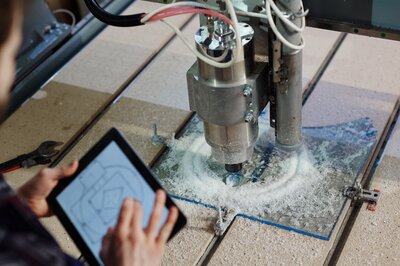Free white paper

It is fashionable to describe one of the differences between process manufacturing and discrete manufacturing as being that process manufacturing makes “stuff” (pounds, gallons, feet, etc.) while discrete manufacturing makes “things” (counts of individual items, in whole integers). Another common differentiator is that process manufacturing depends heavily on recipe management, while discrete manufacturing requires bills of materials.
For those not familiar with managing multilevel bills of materials, be prepared for some surprises as you build your BOM structures into an ERP implementation. Always remember that in discrete manufacturing, if the bill of material is not 100% complete and accurate, the product will not get made. An automobile cannot be sold with only three tires, or lacking an exhaust pipe.
Below are some examples of BOM issues you may find interesting when designing your ERP blueprint:
1. There is typically a funnel shaped explosion of complexity as you move upwards in the bill of material structure from raw material to finished product. You may have ten raw materials that are crafted into one hundred component parts that are combined into one thousand different subassemblies that create ten thousand different variations of finished product. Because of this, it may feel more organized to build BOMS from the bottom up, rather than the top down.
2. You may find that a raw material, component or subassembly is known to have two or more “substitutable” equivalents that are informally managed. You might have two equivalents because of capacity limitations in the supply chain; you also might want to keep two suppliers to ensure competitive pricing. Regardless of the reason, be prepared for passionate discussion about the extent to which these are truly “substitutable”. If they are equivalent, should they be assigned the same part number, and visibility of the original difference lost? If the answer to the previous question is “no”, then should the difference be carried through to the finished assembly, making it a different finished product? Are costs the same? These are interesting business discussions for your ERP project team.
3. Depending on your company’s culture around “make/buy” decisions, you might find your bills of materials extremely complex and cumbersome. For instance, most automobile assembly plants are highly “buy” oriented when it comes to component parts; they buy completed seat assemblies, completed tires, completed engine blocks, and their bill of material structure is just two levels deep. An aerospace manufacturer on the other hand, might be more vertical, with one leg of a bill of material breaking down from an aircraft to the left wing, to the wing flaps, to the hydraulic controls that move the flaps, to the piston, rod, and cylinder that create the hydraulic component, and so on, all the way back to steel or aluminum.
Most ERP packages will cope with whatever you decide you want to do with BOMs – the trick is deciding what you want to do.



How can ERP help your make-to-order manufacturing business thrive?

Key insights on CMMC compliance, deadlines, and securing DoD contracts with CMMC 2.0 certificatio...

Learn about the shop floor efficiencies that can be realized through the implementation of manufa...